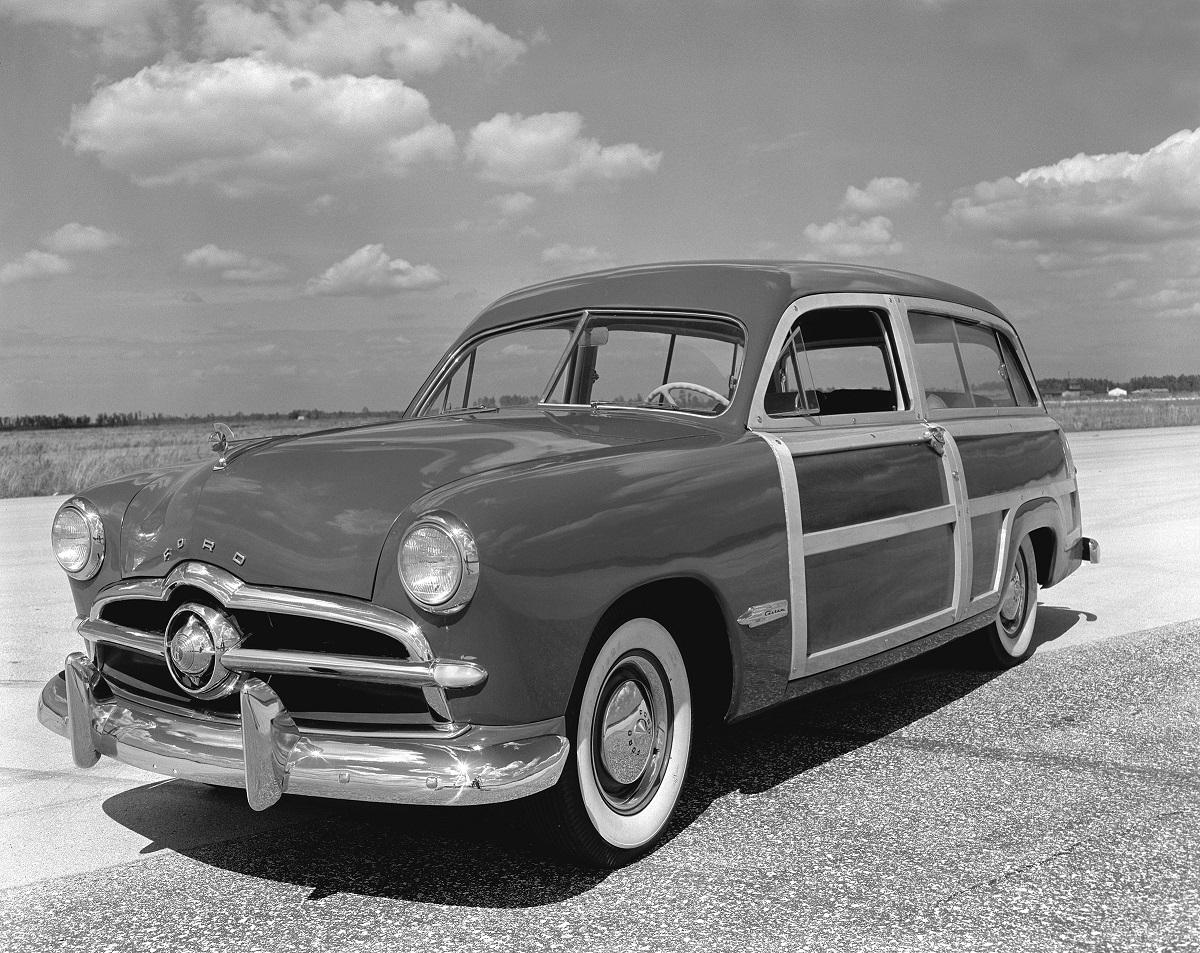Nicknamed “Shoebox Ford,” the 1949 Ford debuted the first post-WWII major redesign

Redesigned from the ground up in many ways, the new Ford retained the drivetrain of previous Ford models. A 226 cubic inch six-cylinder came standard, while an optional 239 cubic inch flathead V-8. (Photos courtesy of Ford PR archives)
The 1949 Ford was the first all-new automobile design introduced by the Big Three after World War II, according to its page in Wikipedia
Civilian production had been suspended during the war, and the 1946 through 1948 models from Ford, GM, and Chrysler were updates of their pre-war models.
The 1949 Ford would come to market in June, beating Chevrolet by about six months and Plymouth by about nine, according to AutomotiveHistory.org.

The 1949 Ford ‘ponton’ styling would continue through the 1951 model year, with an updated design offered in 1952.
New Fords bore model names such as the Custom or Standard Tudor or Fordor, referencing the number of doors on the car. The new models came in coupe, sedan, and convertible body styles, with steel and woody wagon variations.
Redesigned from the ground up in many ways, the new Ford did retain the drivetrain of previous Ford models. A 226 cubic inch six-cylinder came standard, while an optional 239 cubic inch flathead V-8 made the car more fun.

New-for-1949 models came in coupe, sedan, and convertible body styles, with steel and woody wagon variations.
The “Shoebox” Design
According to Wikipedia, the ’49 Ford body style became known as “Shoebox Ford” for its slab-sided “ponton” design. But the 1949 Ford is credited with saving Ford and ushering in modern, streamlined car design with changes such as integrated fenders.
This design would continue through the 1951 model year, with an updated design offered in 1952. Frank L. Engle designed the crest.

The redesigned Mercury Eight for 1949 also debuted the “ponton” styling of the new Fords. The fresh styling was a sales success for both brands.
The redesigned Mercury Eight for 1949 also debuted the “ponton” styling of the new Fords. The fresh design ended the monotony of warmed-over pre-war style, which helped differentiate Mercury from its comparable Ford cousin, a trick that spelled sales success. Sales figures for both Ford and Mercury broke records in 1949.
See more photos and stories about classic cars here.


